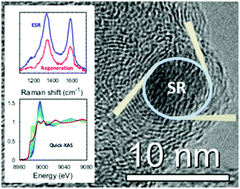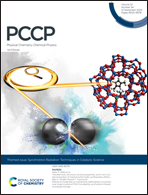Quick-EXAFS and Raman monitoring of activation, reaction and deactivation of NiCu catalysts obtained from hydrotalcite-like precursors†
Abstract
The understanding of phase transformation upon activation, reaction and deactivation of catalysts is of prime importance for tailoring catalysts with better performances. Herein we combined Quick-EXAFS and Raman spectroscopies in operando conditions through the monitoring of reaction products by mass spectrometry in order to study in depth active species and deactivating ones for Ethanol Steam Reforming reaction. Quick-EXAFS data analyzed by multivariate analysis allows one to determine the nickel and copper species involved during the activation of a Ni–Cu hydrotalcite-like precursors. Upon reaction and regeneration monitoring, Raman spectroscopy combined with mass spectrometry highlights the side products formed upon ESR leading to the formation of amorphous coke species encapsulating active metallic species and inducing catalyst deactivation. The coke encapsulation of active species was demonstrated by the simultaneous observation of oxidation of nickel and copper as soon as the amorphous coke was burnt by the oxidative regeneration treatment. Formation of filamentous coke species is also confirmed as causing little impact in catalyst deactivation.

- This article is part of the themed collection: Synchrotron Radiation Techniques in Catalytic Science


 Please wait while we load your content...
Please wait while we load your content...